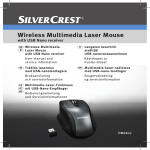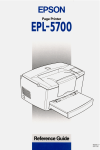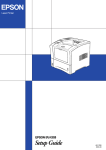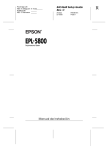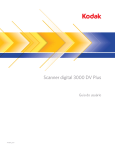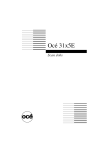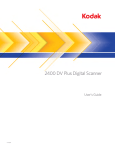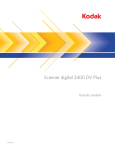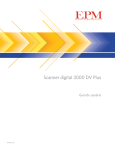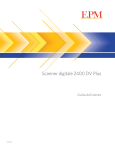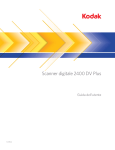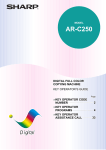Download Epson EPL-5800 User's Manual
Transcript
4014119-03 C01 Where to Find Information Unpacking Guide Provides you with information and instructions on how to unpack and place the printer. Before using the printer, you need to remove all protective materials as described in the instructions contained in this guide. Setup Guide (this manual) Provides you with information on assembling the printer’s parts and installing the printer driver and options. Reference Guide(Online manual) Provides you with detailed information on the printer’s functions, options, maintenance, troubleshooting, and technical specifications. Online Help Provides you with detailed information and instructions on the printer driver and the utility programs that control your printer. Online help will be automatically installed when you install the printer driver and the utility programs. 2 ® Laser Printer All rights reserved. No part of this publication may be reproduced, stored in a retrieval system, or transmitted in any form or by any means, mechanical, photocopying, recording, or otherwise, without the prior written permission of SEIKO EPSON CORPORATION. No patent liability is assumed with respect to the use of the information contained herein. Neither is any liability assumed for damages resulting from the use of the information contained herein. Neither SEIKO EPSON CORPORATION nor its affiliates shall be liable to the purchaser of this product or third parties for damages, losses, costs, or expenses incurred by purchaser or third parties as a result of: accident, misuse, or abuse of this product or unauthorized modifications, repairs, or alterations to this product, or (excluding the U.S.) failure to strictly comply with SEIKO EPSON CORPORATION’s operating and maintenance instructions. SEIKO EPSON CORPORATION shall not be liable against any damages or problems arising from the use of any options or any consumable products other than those designated as Original EPSON Products or EPSON Approved Products by SEIKO EPSON CORPORATION. EPSON and EPSON ESC/P are registered trademarks and EPSON ESC/P 2 is a trademark of SEIKO EPSON CORPORATION. General Notice: Other product names used herein are for identification purposes only and may be trademarks of their respective owners. EPSON disclaims any and all rights in those marks. Copyright © 1999 by SEIKO EPSON CORPORATION, Nagano, Japan. Setup Guide Speedo, Fontware, FaceLift, Swiss, and Dutch are trademarks of Bitstream Inc. CG Times and CG Omega are registered trademarks of Miles, Inc. Univers is a registered trademark of Linotype AG and/or its subsidiaries. Antique Olive is a trademark of Fonderie Olive. Albertus is a trademark of Monotype Corporation plc. Coronet is a trademark of Ludlow Industries (UK) Ltd. Arial and Times New Roman are registered trademarks of Monotype Corporation plc. Dutch and Swiss are trademarks of Bitstream Inc. Times, Helvetica and Palatino are registered trademarks of the Linotype AG and/or its subsidiaries. ITC AvanGarde Gothic, ITC Bookman, ITC Zapf Chancery and ITC Zapf Dingbats are registered trademarks of the International Typeface Corporation. Century SchoolBook is registered trademark of the Kingsley-ATF Type Corporation. New Century Schoolbook is a trademark of the Linotype AG and/or its subsidiaries. HP and HP LaserJet are registered trademarks of Hewlett-Packard Company. Adobe and PostScript are trademarks of Adobe Systems Incorporated, which may be registered in certain jurisdictions. The PCL6 compatible interpreter is a customized version of IPS-PRINT SIX © developed by Xionics Document Technologies, Inc., a subsidiary of Oak Technology, Inc. 2 Contents 1 Safety Instructions Laser Printer Precautions . . . . . . . . . . . . . . . . . . . . . . . . . . . . . . . . . 1 Important Safety Instructions . . . . . . . . . . . . . . . . . . . . . . . . . . . . . 4 Warnings, Cautions, and Notes. . . . . . . . . . . . . . . . . . . . . . . . . . . . 6 2 Assembling and Connecting the Printer Finding a Place for the Printer . . . . . . . . . . . . . . . . . . . . . . . . . . . . . 7 Loading Paper . . . . . . . . . . . . . . . . . . . . . . . . . . . . . . . . . . . . . . . . . . 10 Attaching the Power Cord . . . . . . . . . . . . . . . . . . . . . . . . . . . . . . . . 13 Connecting to the Computer . . . . . . . . . . . . . . . . . . . . . . . . . . . . . . 14 Parallel interface for PCs . . . . . . . . . . . . . . . . . . . . . . . . . . . . . 14 Using a USB connection. . . . . . . . . . . . . . . . . . . . . . . . . . . . . . 15 Testing the Printer Connection . . . . . . . . . . . . . . . . . . . . . . . . . . . . 16 Printing a status sheet from the control panel . . . . . . . . . . . 16 3 Installing the Options 500-Sheet Lower Paper Cassette Unit. . . . . . . . . . . . . . . . . . . . . . . 18 Installing . . . . . . . . . . . . . . . . . . . . . . . . . . . . . . . . . . . . . . . . . . 18 Face-up Tray. . . . . . . . . . . . . . . . . . . . . . . . . . . . . . . . . . . . . . . . . . . . 20 Installing . . . . . . . . . . . . . . . . . . . . . . . . . . . . . . . . . . . . . . . . . . 20 Memory Module . . . . . . . . . . . . . . . . . . . . . . . . . . . . . . . . . . . . . . . . 22 Installing . . . . . . . . . . . . . . . . . . . . . . . . . . . . . . . . . . . . . . . . . . 23 ROM Module . . . . . . . . . . . . . . . . . . . . . . . . . . . . . . . . . . . . . . . . . . . 28 Installing . . . . . . . . . . . . . . . . . . . . . . . . . . . . . . . . . . . . . . . . . . 28 Interface Cards . . . . . . . . . . . . . . . . . . . . . . . . . . . . . . . . . . . . . . . . . . 32 Installing . . . . . . . . . . . . . . . . . . . . . . . . . . . . . . . . . . . . . . . . . . 32 iii 4 Installing the Printer Driver For Windows Users . . . . . . . . . . . . . . . . . . . . . . . . . . . . . . . . . . . . . For Macintosh Users . . . . . . . . . . . . . . . . . . . . . . . . . . . . . . . . . . . . Making Basic Driver Settings . . . . . . . . . . . . . . . . . . . . . . . . . . . . . For Windows users . . . . . . . . . . . . . . . . . . . . . . . . . . . . . . . . . Testing the Printer . . . . . . . . . . . . . . . . . . . . . . . . . . . . . . . . . . . . . . Printing a status sheet from the printer driver . . . . . . . . . . 5 35 41 44 44 45 45 After This... What to do Next . . . . . . . . . . . . . . . . . . . . . . . . . . . . . . . . . . . . . . . . 49 Using the Online Guide. . . . . . . . . . . . . . . . . . . . . . . . . . . . . . . . . . 49 System requirements. . . . . . . . . . . . . . . . . . . . . . . . . . . . . . . . 50 6 Safety Information Laser Safety . . . . . . . . . . . . . . . . . . . . . . . . . . . . . . . . . . . . . . . . . . . . For European users . . . . . . . . . . . . . . . . . . . . . . . . . . . . . . . . . CDRH regulations . . . . . . . . . . . . . . . . . . . . . . . . . . . . . . . . . . Laser safety labels . . . . . . . . . . . . . . . . . . . . . . . . . . . . . . . . . . Internal laser radiation . . . . . . . . . . . . . . . . . . . . . . . . . . . . . . Ozone safety. . . . . . . . . . . . . . . . . . . . . . . . . . . . . . . . . . . . . . . ENERGY STAR Compliance. . . . . . . . . . . . . . . . . . . . . . . . . . . . . . For United Kingdom Users. . . . . . . . . . . . . . . . . . . . . . . . . . . . . . . Use of options . . . . . . . . . . . . . . . . . . . . . . . . . . . . . . . . . . . . . Safety information . . . . . . . . . . . . . . . . . . . . . . . . . . . . . . . . . . Index iv 51 51 53 54 54 55 56 57 57 57 1 Safety Instructions Laser Printer Precautions This printer uses laser technology. The following list of precautions applies whenever you open the printer cover. Even if you are familiar with other types of printers, be sure to follow these precautions carefully to ensure safe, trouble-free operation. w Warning: Be careful not to touch the fuser, which is marked CAUTION Hot Surface Avoid Contact. If the printer has been in use, the fuser can be very hot. CAUTION Hot Surface Avoid Contact ❏ Avoid touching the components inside the printer unless instructed to do so in this guide. Safety Instructions 1 ❏ Never force the printer’s components into place. Although the printer is designed to be sturdy, rough handling can damage it. ❏ When removing the developer cartridge, never touch the developing roller under the flap; otherwise, print quality will decline. ❏ Do not turn the cartridge upside down or stand it on its ends. ❏ When handling the cartridge, always set it on a clean, smooth surface. ❏ Do not attempt to modify or take the cartridge apart. It cannot be refilled. ❏ Do not touch the toner and avoid all contact with your eyes. 2 Safety Instructions ❏ When removing or installing a photoconductor unit, protect the light-sensitive drum from exposure to light any longer than necessary. The light-sensitive drum is the green cylinder visible through the openings in the unit. Overexposing the drum might cause abnormally dark or light areas to appear on the printed page and may shorten the service life of the unit. ❏ Be careful not to scratch the surface of the drum. When you remove the photoconductor unit from the printer, always place the unit on a clean, smooth surface. Avoid touching the drum, as oils from your skin can permanently damage its surface and affect print quality. ❏ To get the best print quality, do not store the photoconductor unit in an area subject to direct sunlight, dust, salty air, or corrosive gases (such as ammonia). Avoid locations subject to extreme or rapid changes in temperature or humidity. ❏ Wait for at least one hour before using a developer cartridge or a photoconductor unit after moving it from a cool to a warm environment to prevent damage from condensation. ❏ Do not leave jammed paper in the printer. It can cause the printer to overheat. Safety Instructions 3 If you plan to use the printer in Germany, observe the following: To provide adequate short-circuit protection and over-current protection for this printer, the building installation must be protected by a 10 or 16 amp circuit breaker. Note for German-speaking users: Bei Anschluss des Druckers an die Stromversorgung muss sichergestellt werden, dass die Gebäudeinstallation mit einer 10 A- oder 16 A-Sicherung abgesichert ist. Important Safety Instructions Read all of these instructions before operating your printer. ❏ Follow all warnings and instructions marked on the printer. ❏ Unplug the printer from the electrical outlet before cleaning. Use a clean, dry, lint-free cloth for cleaning and do not use liquid or aerosol cleaners. ❏ Do not use the printer near water. ❏ Never spill liquid of any kind onto the printer. ❏ Do not place the printer on an unstable surface. ❏ Slots and openings, located on the sides and bottom of the printer, are provided for ventilation. Keep these slots and openings clear to allow proper ventilation. Avoid placing the printer on a soft surface like a bed or a sofa, or in a small enclosed area, as this restricts proper ventilation. ❏ Never push objects of any kind through the slots as they may touch high voltage points or short out parts that could result in fire or electric shock. 4 Safety Instructions ❏ Connect your printer to the correct power supply. Your printer’s power requirements are indicated on a label attached to the printer. If you are not sure of the power supply specifications in your area, contact your local power company or consult your dealer. ❏ If you are unable to insert the plug into the outlet, contact an electrician. ❏ Do not put your printer where the power cord will be stepped on. ❏ When using an extension cord, be careful not to exceed its recommended amperage limit. Also, be sure that all items plugged into the electrical outlet do not exceed a total of 15 amperes. ❏ Except as specifically explained in this guide, do not attempt to service this product yourself. Opening or removing covers that are marked Do Not Remove may expose you to high voltage or other risks. Refer all servicing in those compartments to a qualified service representative. ❏ Be sure to keep the consumable components out of the reach of children. Safety Instructions 5 ❏ Unplug this printer from the wall outlet and refer servicing to a qualified service representative under the following conditions: A. When the power cord or plug is damaged or frayed. B. If liquid has been spilled into the printer. C. If the printer does not operate normally when the operating instructions are followed. D. If the printer has been dropped or the chassis has been damaged. E. If the printer exhibits a distinct change in performance, indicating a need for service. Note: Adjust only those controls that are covered by the operating instructions, as improper adjustment of other controls may result in damage and may require repairs by a qualified service representative. Warnings, Cautions, and Notes w c Warnings must be followed carefully to avoid bodily injury. Cautions must be observed to avoid damage to your equipment. Notes contain important information and useful tips on the operation of your printer. 6 Safety Instructions 2 Assembling and Connecting the Printer Finding a Place for the Printer ❏ Place your printer close enough to the computer or workstation for the printer cable to reach. Assembling and Connecting the Printer 7 ❏ Leave adequate room around the printer to allow easy operation and maintenance, and to ensure sufficient ventilation. The diagram below shows the minimum recommended amount of space. 100 mm 590 mm 300 mm 150 mm 100 mm 990 mm 320 mm 416 mm 600 mm 475 mm 547 mm ❏ If you install the optional 500-Sheet Lower Paper Cassette Unit, you will need an additional 125 mm (4.9 inches) in height. If you install the optional Face-up Tray, you will need an additional 150 mm (5.9 inches) at the back of the printer. 8 Assembling and Connecting the Printer c Caution: ❏ Never place the printer on a stand that is narrower than the printer’s width as this may damage the printer. ❏ Avoid locations that are subject to direct sunlight, extreme temperatures, moisture, or dust. ❏ Place the printer where the power cord can be easily unplugged. ❏ Avoid using an electrical outlet that is controlled by wall switches or automatic timers. Accidental disruption of power may erase valuable information in your computer’s or printer’s memory. ❏ Avoid using electrical outlets on the same circuit as large motors or other items that might disturb the power supply. ❏ Keep the entire computer and printer system away from potential sources of interference, such as loudspeakers or the base units of cordless telephones. Assembling and Connecting the Printer 9 Loading Paper Follow the steps below to load paper into the MP (Multi Purpose) tray: 1. Insert the MP tray into the slot at the front of the printer and push it all the way in. 10 Assembling and Connecting the Printer 2. Fan a stack of paper (up to 150 sheets), and align the edges by tapping the stack on a flat surface. With the paper’s printable side facing upward, place the stack into the tray. Slide the paper guides against the sides of the stack. Note: ❏ To widen the paper guides, you have to press on the lever of the right paper guide while sliding it outwards. ❏ Load letterheads printable side up and with the letterhead portion at the top. Assembling and Connecting the Printer 11 3. Place the cover on the MP tray to protect against dust and to allow manual-feed printing, as shown below. 4. Raise the output tray and lift up the paper support on the top to prevent paper from falling off the edge. 12 Assembling and Connecting the Printer Note: The printer’s default paper size setting is A4 or Letter, depending on the country of purchase. If you are printing on a different paper size from the default, you need to change the printer’s Paper Size setting in the printer driver. Attaching the Power Cord Follow the steps below to connect your printer to an electrical outlet: 1. Make sure the printer is turned off. It is off when the N side of the power switch on the left side of the printer is pushed in. Assembling and Connecting the Printer 13 2. Insert the power cord into the back of the printer and plug the other end into a properly grounded electrical outlet. Connecting to the Computer Your printer comes with two standard interface connectors, parallel and USB. Parallel interface for PCs Follow the steps below to connect the printer to your computer through the parallel interface. You need a shielded, twisted-pair parallel cable. 1. Make sure that both the printer and the computer are turned off. 14 Assembling and Connecting the Printer 2. Plug the cable connector securely into the printer’s parallel interface connector. Then squeeze the wire clips together until they lock into place on both sides. If your cable has a ground wire, connect it to the ground connector located below the interface connector. Ground connector 3. Plug the other end of the cable into the computer’s parallel interface connector. If there is a ground wire at the computer end of the cable, connect it to the ground connector at the back of the computer. Using a USB connection Follow the steps below to connect the printer to your computer through the USB interface. You need a standard shielded USB cable. Note: Only Macintosh® and PC systems equipped with a USB connector and running Mac® OS 8.1 (or later) and Microsoft® Windows® Me/98/2000 respectively support the USB interface. Assembling and Connecting the Printer 15 1. Plug the appropriate end of the cable into the USB port on the back of the printer, as shown below. (The end that fits the printer has a different shape from the end that fits the computer.) 2. Connect the other end of the cable to the computer’s USB port. Testing the Printer Connection To confirm that the printer is connected properly and operating normally, print a status sheet from the control panel. The status sheet contains information about the printer, the current settings, and the installed options, if any. Printing a status sheet from the control panel Follow the steps below to print a status sheet from the printer’s built-in control panel: 1. Make sure that paper is loaded in the printer. 16 Assembling and Connecting the Printer 2. Turn on the printer as shown below. It is on when the | side of the power switch is pushed in. Note: The On Line indicator light on the control panel flashes to show that the printer is warming up. 3. When the printer is online (On Line indicator light is on solid), simultaneously press the Alt and Form Feed buttons. The printer starts printing a status sheet. 4. Check that the printer has printed the status sheet clearly. Note: If you are unable to get the printer to print a correct status sheet, contact your dealer. Assembling and Connecting the Printer 17 3 Installing the Options 500-Sheet Lower Paper Cassette Unit The optional 500-Sheet Lower Paper Cassette Unit (C81336✽) gives you a second paper source, in addition to the MP tray. Installing Follow the instructions below to install the 500-Sheet Lower Paper Cassette Unit: 1. Be sure that the printer’s power cord is not plugged in, and that none of the interface cables are connected. 18 Installing the Options 2. Make sure the printer and the 500-Sheet Lower Paper Cassette Unit are facing the same way. Lift the printer and align the pins on the cassette unit with the holes on the bottom of the printer. Then, lower the printer until it rests securely on the cassette unit. To verify that the 500-Sheet Lower Paper Cassette Unit is correctly installed, print a status sheet. See “Testing the Printer Connection” on page 16. Confirm that the 500-Sheet Lower Paper Cassette Unit is listed under the Hardware Configurations section of the status sheet as one of the available options. If it is not listed on the status sheet, try reinstalling it. Installing the Options 19 Face-up Tray The printer normally outputs paper face-down on top of the printer. If you want face-up output, you can install the optional Face-up Tray (C81337✽). This tray gives you immediate viewing of your printed output and is recommended for printing on media that require a straight-through paper path, such as labels and transparencies. Installing Follow the instructions below to attach the Face-up Tray to the printer: 1. Be sure that the printer is not plugged in. 20 Installing the Options 2. Attach the Face-up Tray by sliding the mounting pins into the corresponding holes, one at a time. Do not force both sides in at once. Installing the Options 21 Note: The printer is factory set for face-down output. To output onto the optional Face-up Tray, push down the paper path selector at the rear right of the printer, as shown in the illustration below. Memory Module By installing a Dual In-line Memory Module (DIMM), you can increase printer memory up to 256 MB (standard 16 MB plus optional 32, 64, 128, 256 MB). You may want to add additional memory if you are having difficulty printing complex or graphicsintensive pages. Note: Maximum accessible memory is 256 MB. Even with 272 (16+256) MB installed, only 256 MB are accessible. You can purchase DIMMs from various vendors. Be sure the DIMM you purchase meets the following requirements: 22 Installing the Options ❏ SDRAM type ❏ Capacity of 32, 64, 128, or 256 MB ❏ 168-pin type, 64 bit, with SPD ❏ Access speed of 66.66 MHz or higher (15 ns or less) ❏ Height of less than 40 mm Installing Follow the instructions below to install a DIMM into the printer: w Warning: To avoid electrical shock, do not attempt to install a DIMM unless the printer is turned off. 1. Make sure that the printer is not plugged in. 2. Press the latch on the left side of the printer, and raise the printer cover. Installing the Options 23 3. Face the right side of the printer, and using a crosshead screwdriver, remove the two screws holding the side cover in place. Pull the side cover off toward you. Note: Be careful to avoid dropping screws into the printer when removing them. It may be helpful to use a magnetic screwdriver. 24 Installing the Options 4. Identify the slot into which the DIMM is to be installed—the long slot with the two clips at the ends. Make sure that the clips are open (leaning away from the slot). This is the slot. Clips must be open. w c Warning: Avoid touching the electrical components that are exposed after you remove the side cover. These components may become hot while the printer is in use. Caution: Before you install the module, be sure to discharge any static electricity by touching a grounded piece of metal; otherwise, you may damage static-sensitive components. Installing the Options 25 5. Insert and push the DIMM firmly into the slot, but without forcing it. Be sure that the ends of the DIMM engage the clips, so that the clips click closed over the ends as the DIMM snaps into place. 26 Installing the Options 6. Set the side cover back into place. 7. Fasten the side cover with the two screws. 8. Gently close the printer cover. Installing the Options 27 To verify that memory is correctly installed, print a status sheet. See “Testing the Printer Connection” on page 16. If an incorrect amount of memory is shown on the status sheet, turn off the printer, unplug it, disconnect all interface cables, and then review the steps above to make sure you installed the DIMM correctly. If the amount of memory is still incorrect, contact your dealer or a qualified service representative for assistance. ROM Module The Adobe® PostScript® 3™ Kit ROM module (C83239✽) is a useful option that generates crisp PostScript output. Installing Follow the instructions below to install the ROM module: 1. Make sure that the printer is not plugged in. 2. Press the latch on the left side of the printer, and raise the printer cover. 28 Installing the Options 3. Face the right side of the printer, and using a crosshead screwdriver, remove the two screws holding the side cover in place. Pull the side cover off toward you. Note: Be careful to avoid dropping screws into the printer when removing them. It may be helpful to use a magnetic screwdriver. Installing the Options 29 4. Identify the ROM slot. It is the black slot on the top. Insert and push the ROM module evenly into the slot until the button comes up. 30 Installing the Options 5. Set the side cover back into place. 6. Fasten the side cover with the two screws. 7. Gently close the printer cover. Installing the Options 31 To verify that the ROM module is correctly installed, print a status sheet. See “Testing the Printer Connection” on page 16. If the ROM module is not listed under the Hardware Configurations section of the status sheet, turn off the printer, unplug it, disconnect all interface cables, and review the steps above to make sure you installed the module correctly. If the ROM module still does not show up in the status sheet, contact your dealer or a qualified service representative for assistance. Interface Cards Your printer comes with a Type B interface slot. You can install an optional interface card into this slot to expand the flexibility of your printer. For example, installing an optional Ethernet card turns your printer into a network printer. Installing Follow the instructions below to install an optional interface card: c Caution: Before you install the interface card, be sure to discharge any static electricity by touching a grounded piece of metal; otherwise, you may damage static-sensitive components. 1. Make sure the printer is unplugged and that all interface cables are disconnected. 32 Installing the Options 2. Remove the two screws that secure the interface slot cover and remove the cover. 3. Slide the interface card into the grooves of the interface slot, as shown below. Push the card in firmly to lock it into place. Installing the Options 33 4. Secure the interface card with the two retaining screws. 5. When you finish installing the option, plug in the power cable and reconnect the interface cables before turning the printer on. To verify that the optional interface card is correctly installed, print a status sheet. See “Testing the Printer Connection” on page 16. If the installed interface is not shown in the Hardware Configurations section of the status sheet, turn off the printer, unplug it, disconnect all interface cables, and review the steps above to make sure you installed the interface card correctly. If the installed interface still does not show up in the status sheet, contact your dealer or a qualified service representative for assistance. 34 Installing the Options 4 Installing the Printer Driver The printer driver is provided on the “EPSON EPL-5800 Printer Software” CD-ROM shipped with your printer. It gives you control over your printer with Microsoft Windows Me/2000/98/ 95/3.1, Microsoft Windows NT® 4.0/3.51, or Mac OS 8.1 or later. With it, not only can you make basic printer settings like paper size and orientation, but also have access to a whole range of other options that will help you optimize the use of your printer. When you install the printer driver, the EPSON Status Monitor 3 utility is also automatically installed. This utility gives you the option to view printer information such as the remaining amount of toner, and can be set up to notify you of errors when they occur. Refer to the Reference Guide for more information on the utility. For Windows Users Your computer must meet the following requirements to use the Windows driver included with the printer: ❏ The computer must be running either Microsoft Windows Me/2000/98/95/3.1 or Windows NT 4.0/3.51 ❏ 10 MB of free hard disk space Follow the steps below to install the printer driver: 1. Make sure that the printer is off and that Windows is running. 2. Insert the printer software CD-ROM that comes with your printer into your CD-ROM drive. The Installer dialog box appears. Installing the Printer Driver 35 Note: For floppy disk users, insert the disk into the floppy disk drive, double-click the My Computer icon and then the floppy disk drive icon. Double-click Setup.exe. 3. In the dialog box that appears, double-click Install Printer Driver/Utility, or select Install Printer Driver/Utility and then click the top arrow on the right. Note: If the EPSON Installation Program screen does not appear, click Start and choose Run in Windows Me/200098/95 or Windows NT 4.0, or choose Run from the File menu in the Program Manager in Windows 3.1 or Windows NT 3.51. Enter D:\EPSETUP.EXE and click OK. Substitute with the appropriate drive letter, if necessary. 36 Installing the Printer Driver 4. In the dialog box that appears, select EPSON EPL-5800 Advanced and click OK. This automatically installs the printer driver. 5. If you are running Windows 95/3.1 or NT 4.0/3.51, proceed to the next step. If you are running Windows Me or 98, follow the on-screen instructions that ask you to turn the printer on. If you are running Windows 2000 through parallel interface, click the Stop serching button. The printer port configuration starts automatically. Installing the Printer Driver 37 Note: For printers connected through the USB interface, the USB device driver installation starts automatically at this point. If a dialog box appears asking whether you wish to restart your computer, click Yes. After restarting the computer, you need to check your printer port configuration. See “Ensuring that the USB driver is installed correctly in Windows” later in this section. 6. When installation is complete, click OK. Note: ❏ The EPSON Status Monitor 3 utility is also installed on systems running Windows Me/2000/98/95 and Windows NT 4.0. ❏ Installation time varies depending on your computer system. The printer driver is now installed on your computer. The installation program automatically selects this printer as the default printer for Windows applications. Before using the printer driver, read the README file located in the printer software CD-ROM. Ensuring that the USB driver is installed correctly Use the following procedure to confirm that the USB driver is installed correctly: 1. Click the Start button, point to Settings and click on the Printers folder. Make sure the icon for the printer appears in the Printers folder. 38 Installing the Printer Driver 2. Click the printer icon, and select Properties from the File menu. Installing the Printer Driver 39 3. In Windows Me or 98, click the Details tab and make sure that EPUSB1: (EPSON EPL-5800) is displayed in the Print to the following port list box. In Windows 2000, click Ports tab and make sure that USB001 is selected. Note: If the correct port is not displayed, see “Troubleshooting” in the Reference Guide. 40 Installing the Printer Driver For Macintosh Users Your computer must meet the following requirements to use the Macintosh driver included with the printer: ❏ 6 MB of free hard disk space ❏ The computer must be running Mac OS 8.1 or later.* * To turn off QuickDraw GX, first make sure the Caps Lock key is unlocked. Then, while holding down the spacebar, restart your Macintosh. The Extensions Manager will open. Clear the QuickDraw GX check box, then close the Extensions Manager. c Caution: Turn off all virus protection programs before you install your printer driver. Note: To connect the printer to the USB interface on your Macintosh, you must purchase a USB cable. Follow these steps to install your printer driver: 1. Turn on your Macintosh and insert the printer software CDROM into the CD-ROM drive. 2. The CD-ROM window opens automatically. 3. Double-click the Installer icon. Installing the Printer Driver 41 4. The printer driver has to be installed into the drive that contains the system software. Check that the Install Location box displays the correct drive. Click Install. 5. Click Continue in the dialog box that appears. 6. When a message appears informing you that the installation has finished, click Restart to complete the installation. Selecting your printer in the Chooser After you have installed the printer driver, you need to open the Chooser to select your printer. This procedure is necessary the first time you use a printer or whenever you want to switch printing to another printer. Your Macintosh will always print using the last printer selected. 42 Installing the Printer Driver 1. Select Chooser from the Apple menu. Click your printer’s icon and then click the port your printer is connected to. 2. Click the Background Printing radio buttons to turn background printing on or off. Note: ❏ Background printing must be turned on for the EPSON Status Monitor 3 to manage print jobs. ❏ When background printing is on, you can use your Macintosh while it is preparing a document for printing. 3. Close the Chooser. Installing the Printer Driver 43 Making Basic Driver Settings Before you start printing, you should make sure the driver settings match your document requirements. While many Windows applications override the printer settings made in the printer driver when it is accessed directly from the operating system, some do not. Be sure to check the following: Paper Size: The size of the paper loaded in the printer Orientation: The direction of printing on the page (portrait or landscape) Paper Source: Auto Selection, MP Tray, or 500-Sheet Lower Paper Cassette Unit (if installed) Print Quality: The print resolution in dots per inch (dpi) For Windows users Follow the instructions below to make the required settings: 1. Click the Start button. 2. Point to Settings, then click Printers. 3. Right-click your printer icon and choose Properties (in Windows Me/2000/98/95) or Document Defaults (in Windows NT 4.0). 4. Click the Basic Settings tab. 44 Installing the Printer Driver 5. Select the paper size you loaded into the printer from the Paper Size setting. If you don’t see your paper size on the list, use the arrow on the right to scroll through the list. 6. Select Portrait or Landscape orientation. The direction of printing changes according to the orientation you select. 7. Select the paper source. The available options are Auto Selection, MP Tray, and Lower Cassette (if the optional 500Sheet Lower Paper Cassette Unit is installed). 8. Select the resolution from the Print Quality setting. Make any other settings you wish, and click the OK button when you are finished. Testing the Printer To confirm that the printer driver is installed properly, print a status sheet from the printer driver. The status sheet contains information about the printer, the current settings, and the installed options, if any. Printing a status sheet from the printer driver Follow the steps below to print a status sheet from the printer driver: For Windows users 1. Make sure that paper is loaded in the printer. Installing the Printer Driver 45 2. Turn on the printer as shown below. It is on when the | side of the power switch is pushed in. Note: The On Line indicator light on the control panel flashes to show that the printer is warming up. 3. Make sure that your computer is turned on and that Windows is running. 4. Click Start, point to Settings and click Printers. 5. Right-click the icon of your printer, and click Properties. 6. Click the Optional Settings tab and then click the Status Sheet button. The printer starts printing a status sheet. 7. Check that the printer has printed the status sheet clearly and that any installed options are included in the Hardware Configurations section of the status sheet. 46 Installing the Printer Driver Note: ❏ If you installed an optional memory module of 128 MB or less, “Installed Memory” should show the total memory size (16 MB standard plus the size of the optional module). However, if you installed a 256 MB optional memory module, the status sheet would only show 256 MB, the maximum accessible memory size. ❏ If the status sheet does not correctly show your installed options, check the options again to make sure they are connected securely to the printer. ❏ If you are unable to get the printer to print a correct status sheet, contact your dealer. For Macintosh users Follow the steps below to print a status sheet: 1. Select Chooser from the Apple menu. Select your printer by clicking its icon, and then the port your printer is connected to. Click the Setup button, and the EPSON Printer Setup dialog box appears. 2. Click the Print Status Sheet button, and the printer starts printing a status sheet. 3. Click OK and the dialog box will close. 4. Check that the printer has printed the status sheet clearly and that any installed options are included in the Hardware Configurations section of the status sheet. Installing the Printer Driver 47 Note: ❏ If you installed an optional memory module of 128 MB or less, “Installed Memory” should show the total memory size (16 MB standard plus the size of the optional module). However, if you installed a 256 MB optional memory module, the status sheet would only show a size of 256 MB, the maximum accessible memory size. ❏ If the status sheet does not correctly show your installed options, check the options again to make sure they are connected securely to the printer. ❏ If you are unable to get the printer to print a correct status sheet, contact your dealer. 48 Installing the Printer Driver 5 After This... What to do Next After completing the hardware setup and the driver installation, see the Reference Guide for detailed information about your printer’s functions, maintenance, troubleshooting, technical specifications and optional products. Using the Online Guide It contains detailed instructions on how to use the printer, and information on installing and using optional products. You can view this guide directly from the CD-ROM, or install it into your computer and view it from your hard disk. Note: Microsoft Internet Explorer 4.0 or later, or Netscape Navigator 4.0 or later, must be installed in your computer to read the online guide. After This... 49 System requirements For Windows System CPU Windows Me/2000/98/95, or Windows NT 4.0 Pentium 150 MHz processor (for Windows Me) i486/66 MHz (for Windows 98) (Pentium or better recommended) i486/25 MHz (for Windows 95 / NT 4.0) (Pentium or better recommended) Pentium 133 MHz for Windows 2000 Memory 16 MB RAM for Windows 98, 95, and NT 4.0 (32 MB or more recommended) 32 MB RAM for Windows Me and 2000 Hard disk space 3 MB to install the Reference Guide CD-ROM drive Double-speed (Quad-speed or faster recommended) Display 640 × 480 pixel or 800 × 600 pixel resolution, with High Color (16 bit) or True Color (32 bit) setting Browser Web browser (Microsoft Internet Explorer 4.0 or later recommended) For Macintosh 50 System System 7.5.1 (System 7.6 or later recommended) Memory 16 MB RAM (32 MB or more recommended) Hard disk space 3 MB to install the Reference Guide CD-ROM drive Double-speed (Quad-speed or faster recommended) Display Color monitor with 640 × 480 pixel resolution or greater (Thousands of colors recommended) Browser Web browser (Microsoft Internet Explorer 4.0 or later recommended) After This... 6 Safety Information Laser Safety This printer is certified as a Class 1 laser product under the U.S. Department of Health and Human Services (DHHS) Radiation Performance Standard according to the Radiation Control for Health and Safety Act of 1968. This means that the printer does not produce hazardous laser radiation. Since radiation emitted by the laser is completely confined within protective housings and external covers, the laser beam cannot escape from the machine during any phase of user operation. For European users United Kingdom The EPL-5800 is a page printer which utilizes a semiconductor laser. There is no possibility of danger from the laser, provided that the printer is operated according to the instructions in the guides provided. w Warning: The use of controls, or the performance of procedures other than those specified in this guide may result in hazardous radiation exposure. This is a semiconductor laser. The maximum power of the laser diode is 5 mW, with a wavelength of 770 to 810 nm. Safety Information 51 Denmark Advarsel Usynlig laserstråling ved åbning, når sikkerhedsafbrydere er ude af funktion. Undgå udsættelse for stråling. Klasse 1 laser produkt der opfylder IEC60825 sikkerheds kravene. Finland and Sweden EPL-5800 on lasertoiminen sivukirjoitin. Laserista ei aiheudu käyttäjälle vaaraa, kun kirjoitinta käytetään käyttäohjeiden mukaisesti. Laserin aiheuttama säteily jää kokonaisuudessaan suojarakenteiden sisäpuolelle, eikä lasersäde pääse laitteen ulkopuolelle sit käytettäessä. VAROITUS! Laitteen käyttäminen muulla kuin tässä käyttäohjeessa mainitulla tavalla saattaa altistaa käyttäjän turvallisuusluokan 1 ylittävälle näkymättämälle lasersäteilylle. VARNING! Om apparaten används på annat sätt än i denna bruksanvisning specificerats, kan användaren utsättas för osynlig laserstrålning, som överskrider gränsen för laser klass 1. LUOKAN 1 LASERLAITE KLASS 1 LASER APPARAT Kirjoittimen taakse kuvan osoitamiin paikkoihin on kiinnitetty tarrat, jotka osoittavat, että kirjoitin on B.S.7192 ja IEC 60825määräysten mukainen luokan 1 laserlaite. Jos kirjoittimen kuori poistetaan, näkyviin tulee kolmas, alla oleva tarra. 52 Safety Information Norway Advarsel Dersom apparatet brukes på annen måte enn spesifisert i denne bruksanvisning, kan brukeren utsettes for unsynlig laserstråling som overskrider grensen for laser klasse 1. Dette er en halvleder laser. Maksimal effeckt til laserdiode er 5 mW og bølgelengde er 770-810 nm. CDRH regulations The Center for Devices and Radiological Health (CDRH) of the U.S. Food and Drug Administration implemented regulations for laser products on August 2, 1976. Compliance is mandatory for products marketed in the United States. The label shown below indicates compliance with CDRH regulations and must be attached to laser products marketed in the United States. Safety Information 53 Laser safety labels w Warning: The use of controls, or the performance of procedures other than those specified in this guide may result in hazardous radiation exposure. Your printer is a Class 1 laser product as defined in IEC 60825 specifications. The label shown below is attached in countries where required. Internal laser radiation Maximum Radiation Power: 0.6 mW at laser aperture of the print head unit Wavelength: 770 to 810 nm This product employs a Class IIIb Laser Diode that emits an invisible laser beam. The Laser Diode and Scanning Polygon Mirror are incorporated in the print head unit. The print head unit is NOT A FIELD SERVICE ITEM. The print head unit should not be opened under any circumstance. 54 Safety Information An additional laser warning label is affixed to the inside of the printer, as shown below. Ozone safety Ozone emission Ozone gas is generated by laser printers as a by-product of the printing process. Ozone is produced only when the printer is printing. Ozone exposure limit The recommended exposure limit for ozone is 0.1 parts per million (ppm) expressed as an average time-weighted concentration over an eight (8) hour period. The EPL-5800 laser printer generates less than 0.1 ppm for 8 hours of continuous printing. Minimize exposure risk To minimize the risk of exposure to ozone: Safety Information 55 ❏ Do not use more than one laser printer in a confined area (see “Ozone exposure limit” above) ❏ Do not use your printer in conditions of extremely low humidity ❏ Do not use your printer in a room with poor ventilation ❏ Avoid long, continuous printing in any of the conditions mentioned above Printer location The printer should be located so that the exhaust gases and generated heat are: ❏ Not blown directly into the user’s face ❏ Vented directly out of the building whenever possible ENERGY STAR Compliance As an ENERGY STAR Partner, EPSON has determined that this product meets the ENERGY STAR guidelines for energy efficiency. The International ENERGY STAR Office Equipment Program is a voluntary partnership with the computer and office equipment industry to promote the introduction of energy-efficient personal computers, monitors, printers, fax machines, copiers, and scanners, in an effort to reduce air pollution caused by power generation. 56 Safety Information For United Kingdom Users Use of options Epson (UK) Limited shall not be liable for any damages or problems arising from the use of any options or consumable products other than those designated as original EPSON products or EPSON-approved products by Epson (UK) Limited. Safety information Warning: This appliance must be earthed. Refer to the rating plate for voltage and check that the appliance voltage corresponds to the supply voltage. Important: The wires in the main lead fitted to this appliance are colored in accordance with the following code: Green and yellow—Earth Blue—Neutral Brown—Live If you need to fit a plug: As the colors of the main lead of this appliance may not match any colored markings used to identify the terminals in a plug, please proceed as follows: ❏ The green and yellow wire must be connected to the terminal in the plug which is marked with the letter E or the Earth symbol (G). ❏ The blue wire must be connected to the terminal in the plug marked with the letter N. ❏ The brown wire must be connected to the terminal in the plug marked with the letter L. Safety Information 57 If damage occurs to the plug, replace the cord set or consult a qualified electrician. Replace fuses only with a fuse of the correct size and rating. 58 Safety Information Index Numerics 500-Sheet Lower Paper Cassette Unit, installing, 18 A Assembling the printer, 7 C CDRH regulations, 53 Connecting the printer, 7 Connecting to the computer parallel interface, 14 USB interface, 15 D Driver basic settings, 44 installing (Macintosh), 41 installing (Windows), 35 E ENERGY STAR Compliance, 56 F Face-up Tray, installing, 20 I Installing 500-Sheet Lower Paper Cassette Unit, 18 Face-up Tray, 20 interface cards, 32 memory module, 22 printer driver, 35 ROM module, 28 Interface parallel, 14 USB, 15 Interface cards, 32 L Laser printer precautions, 1 Laser safety CDRH regulations, 53 ozone safety, 55 safety labels, 54 Letterheads, 11 Loading paper, 10 M Memory module, installing, 23 O Online guide system requirements, 50 using, 49 Options 500-Sheet Lower Paper Cassette Unit, 18 Face-up Tray, 20 interface cards, 32 memory module, 22 ROM module, 28 Ozone, safety, 55 P Paper letterheads, 11 loading, 10 Index 59 Parallel interface, 14 Power cord, attaching, 13 Printer driver installing (Macintosh), 41 installing (Windows), 35 Printing a status sheet for Macintosh, 47 for Windows, 45 R ROM module, installing, 28 S Safety information laser safety, 51 ozone, 55 Safety instructions, 4 Status sheet printing from the control panel, 16 printing from the printer driver, 45 T Testing the printer, 16, 45 U United Kingdom users, 57 USB connection, 15 ensuring that the USB driver is installed correctly, 38 60 Index Printed in Japan 00.XX-XX





































































